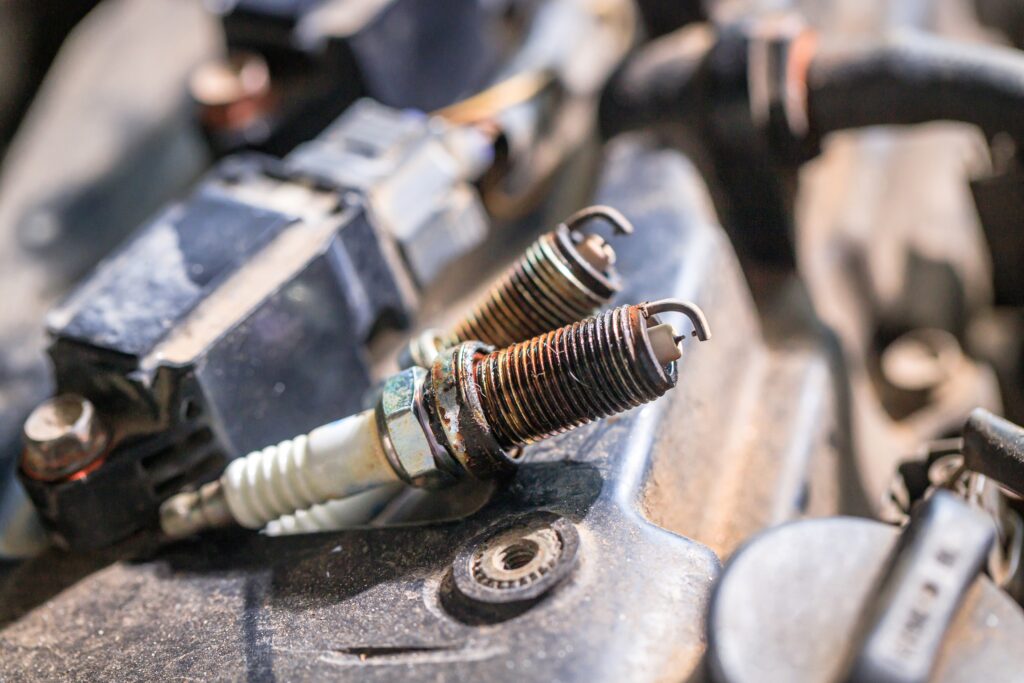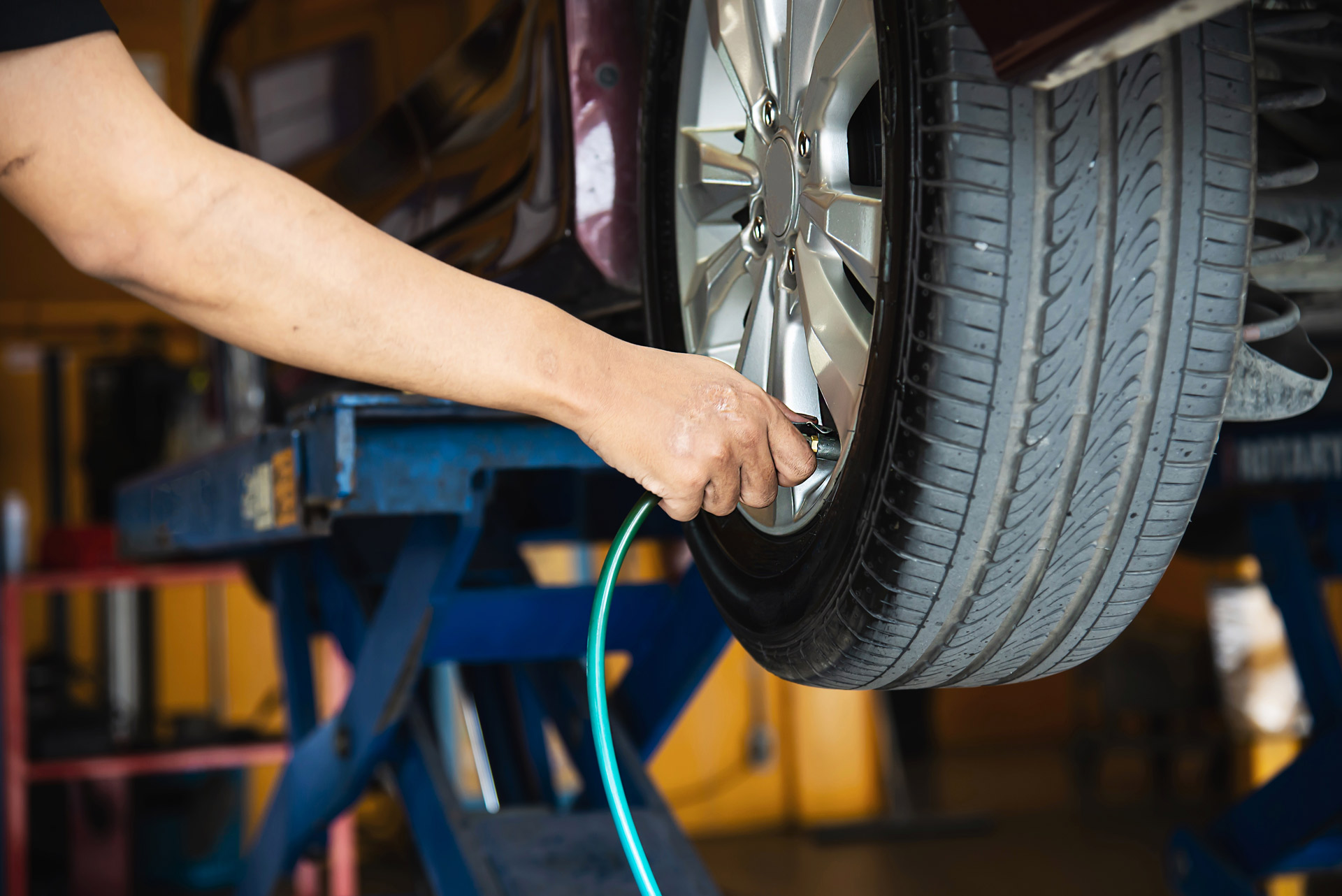

Modern cars rely on the ignition coil-on-plug (COP) design to deliver proper voltage to the spark plugs and promote combustion. However, normal wear and tear, oil leaks, electrical surges, worn spark plugs, and other conditions can cause ignition coils to fail. Prolonged driving with a bad ignition coil can also risk the engine and catalytic converter.
This guide outlines the nine most common symptoms associated with a bad ignition coil to assist mechanics and shop owners in quickly diagnosing and resolving these ignition-related issues. The step-by-step diagnostic procedures described below incorporate the use of a multimeter and OBD-II scanner to confirm coil failure and avoid misdiagnoses that waste valuable time. Improve diagnostic accuracy and shop efficiency with Identifix Direct-Hit®, your most reliable resource for real-world, technician-verified fixes and streamlined ignition system repairs.
1. Check Engine Light
With a few exceptions, any one of the symptoms associated with a faulty ignition coil can cause a check engine light (CEL) to illuminate. The spark plugs require voltage from the ignition coil to properly combust the air/fuel mixture present in the cylinder. When that voltage varies, or even drops, the basic function of the powertrain’s critical components suffers and prompts the illuminated CEL.
2. Engine Misfire
A faulty ignition coil could be responsible for an engine misfire if the air/fuel mixture fails to combust fully. Hesitation and lack of power are characteristic of a misfire. These symptoms typically worsen when the engine is under load.
3. Rough Idle
A rough idle can also indicate the presence of a misfire due to a bad ignition coil. The engine idles roughly based on the varying voltage the spark plugs receive and deploy in combusting the air/fuel mixture. Uneven combustion due to a lack of a consistent spark prevents the engine from settling into idle conditions.
4. Hard/No Start
When the ignition coil fails to deliver the correct, consistent voltage or delivers voltage in large variances, the resulting weak spark can cause a hard start. In some cases, the lack of spark can prevent the engine from starting altogether. Cold weather can often exacerbate these symptoms.
5. Reduced Fuel Economy
Without complete combustion, the engine cannot optimize its fuel usage to achieve proper fuel economy. In fact, the engine may burn more fuel as a way to compensate for a lack of spark and subsequent power. When the spark plug’s performance varies so greatly, optimization is near impossible.
6. Sluggish Engine Performance
Weak spark and uneven combustion restrict the engine from making power and accelerating. As the powertrain control module (PCM) futilely chases an underperforming spark plug caused by a bad ignition coil, the struggle throws the engine off pace. While the air/fuel mixture may combust enough to boost power at certain intervals, the lack of consistent combustion prevents the engine from functioning properly.
7. Increased Emissions
The PCM often addresses a weak spark with more fuel, which results in significantly higher emissions. The unburned fuel exits via the exhaust system, continues through the catalytic converter, and puffs out of the tailpipe as thick, dark smoke. In addition to increasing a car’s carbon footprint, the excess emissions can also prematurely wear the catalytic converter.
8. Engine Stalling
Once an ignition coil has deteriorated enough that the spark plugs fires only on occasion, it can cause the engine to stall. If the engine suddenly quitting wasn’t enough of an inconvenience, stalls can potentially happen in less-than-ideal conditions that put the driver’s life—and any passengers’ lives—at risk.
9. Backfiring
Unburned fuel and plenty of oxygen within the exhaust system provide the perfect conditions for backfiring. The same raw fuel that’s responsible for increased emissions and diesel-like exhaust smoke can also ignite within the exhaust system, causing a loud explosion characteristic of backfiring.
Ignition coils can fail for several reasons, from normal wear and tear from sitting atop the hot and vibrating engine to damaged windings, contamination, electrical surges, worn spark plugs, and faulty fuel system components. Before diving into the diagnostic steps below, check the battery voltage to ensure it’s not the source of the problem. Next, gather an OBD-II scanner and multimeter to diagnose a bad ignition coil thoroughly:
While replacing a faulty ignition coil is the logical solution, it’s not necessary to replace all of your vehicle’s ignition coils at the same time, as you would with other components. However, you should replace the spark plug at the same time as the ignition coil, as the bad coil can prematurely foul the coupled plug. It’s also a good idea to inspect or even test the other coils since you’re already set up to do so.
Problems with a bad ignition coil can easily threaten the powertrain’s vital components, especially if left undiagnosed and unaddressed. Diagnose the underlying cause of a faulty ignition coil accurately and efficiently with Identifix Direct-Hit, leveraging its comprehensive database of make and model-specific technician-confirmed fixes, full-color wiring diagrams, and OEM service information.
Contact us today to speak with a friendly and knowledgeable representative about how Identifix can streamline diagnostics and repairs in your auto repair shop.
Did you like this article? Find more great content at identifx.com/blogs and solera.com/blog.

Identifix is the leading provider of automotive repair shop solutions and sevices designed to improve shop profitability and repair outcomes.
"*" indicates required fields